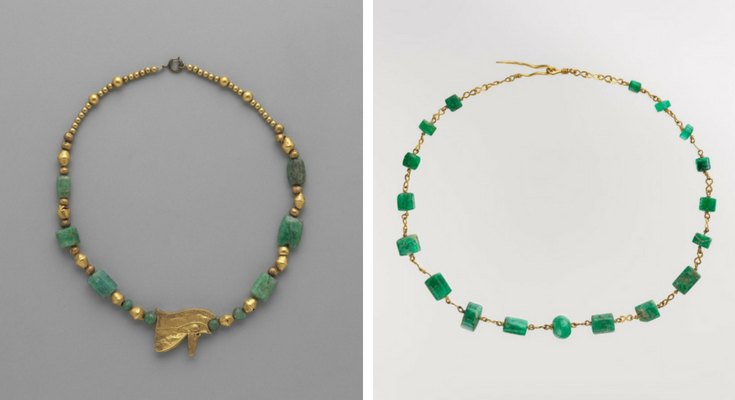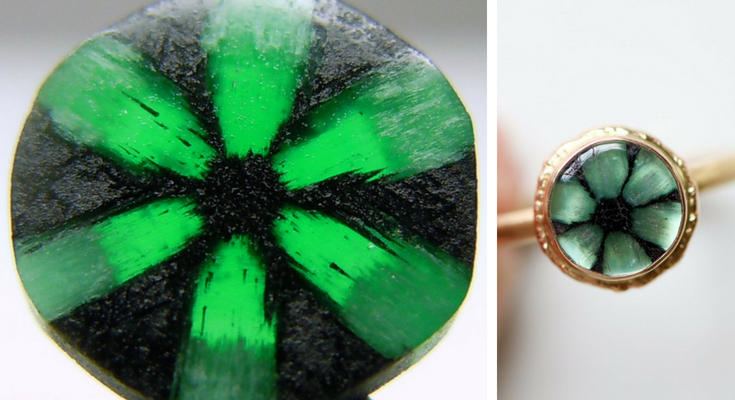It’s just a couple of days left of May which means I’m all caught up with my birthstone blog posts (phew)! May has been an amazing month weather wise here in Sweden, we’ve had sun and summer warmth for nearly 4 weeks, more or less the whole month! Let’s just hope it continues to be this good throughout the actual summer months *fingers crossed*
Anyway, back to what I was talking about, the May birthstone!

A Brief History Lesson
Emeralds have been known for more than 4000 years and were first discovered in Egypt where they were admired by none other than Queen Cleopatra herself. Apart from being beautiful, emeralds were highly valued because they were believed to increase intelligence, protect marriages, ease childbirth and thought to enable its possessor the power of predicting future events. Now wouldn’t that be neat!

At the present, emeralds are still highly valued, but nowadays it all has to do with their aesthetic. The country that produces not only the best ones but also the most ones is Colombia. Colombia is by far the leading producer of gem quality emeralds and accounts for about 70-90% of the world production, depending on the year, source and grade of the emeralds mined.
A beautiful and unique variety of the emerald, the “trapiche” emerald, is found here. These are distinguished by a six-pointed radial pattern of ray-like spokes of dark impurities.

Colombian emeralds are highly popular due to their purity. Their purity is thought to be due to their host rock, the rock in which they grew, which is of sedimentary origin. All other emeralds are found within igneous rocks such as pegmatites (read more about pegmatites here). So far the Colombian emeralds are actually the only ones found within sedimentary rocks.

Fun fact: the Colombian emeralds were in fact formed during the formation of the Andes that stretches along the whole of the west coast of South America.
The Evergreen Emerald
Emeralds are part of the beryl family together with aquamarine, morganite and heliodor amongst others. You can read more about the beryl family and its gemstone members in my previous blog post about aquamarines here.
Emeralds get their beautiful green colour from trace amounts of chromium and sometimes vanadium in its crystal lattice. Emeralds have a hardness of about 7.5 – 8 on Mohs hardness scale. For comparison quartz has a hardness of 7 and rubies and sapphires have a hardness of 9. As with all other beryl members, emeralds have a hexagonal crystal structure.

Treatment
Unlike most of the other members of the beryl group though, emeralds are usually highly included and can have tiny fractures within which sometimes might reach the surface of the stone. This means their resistance to breakage is generally poor. This also means that most emeralds are treated to improve their stability.

The common treatment is with oils with a similar refractive index as emeralds to ensure the treatment won’t change its lustre or colour. For the oil to be absorbed more effectively, it’s applied within a vacuum chamber under mild heat in order to open up the pores in the stone and allow the oil to properly fill in the fractures.
This kind of treatment is very common nowadays, but sellers of emerald gemstones still need to inform potential buyers if a treatment has been done since any kind of treatment lowers its value.
. . . . .
Well this post turned out to be short but sweet and I hope you enjoyed it – thank you for reading, you’re a gem!
Linda
